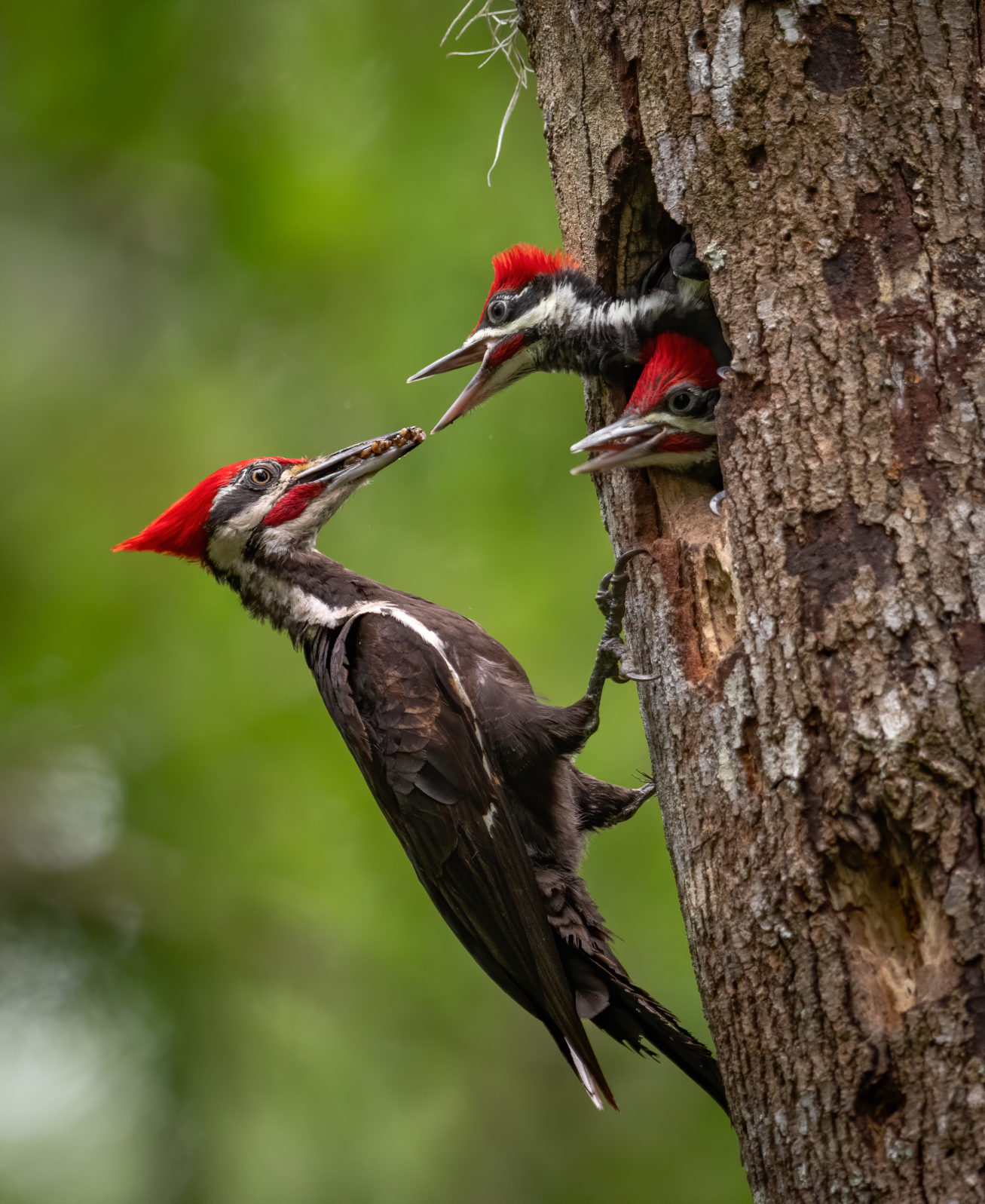Woodpeckers: There Are Advantages to Having a Small Brain
Woodpeckers absorb 1200 to 1400 g shock driving their beaks into wood — but a shock absorbing skull doesn’t explain the absence of damageHow do woodpeckers absorb a remarkable amount of shock to the head — 1200 to 1400 g — for each hit on a tree? A football player might absorb 120 g — without damaging their brains? The answers could help minimize brain damage in humans and suggested explanations include a surplus of tau proteins (2017), an unusual bone in the tongue, and head movements that minimize brain damage.
A new research team challenges such explanations saying that their data show that woodpecker heads” act more like stiff hammers” and that “any shock absorbance would hinder the woodpeckers’ pecking abilities.” But then what about the bird’s brain?
While the deceleration shock with each peck exceeds the known threshold for a concussion in monkeys and humans, the woodpeckers’ smaller brains can withstand it. [Sam] Van Wassenbergh says that woodpeckers could make a mistake, for instance if they were to peck on metal at full power. But their usual pecking on tree trunks is generally well below the threshold to cause a concussion, even without their skulls acting as protective helmets.
“The absence of shock absorption does not mean their brains are in danger during the seemingly violent impacts,” says Van Wassenbergh. “Even the strongest shocks from the over 100 pecks that were analyzed should still be safe for the woodpeckers’ brains as our calculations showed brain loadings that are lower than that of humans suffering a concussion.”
Cell Press, “Woodpeckers’ heads act more like stiff hammers than safety helmets” at ScienceDaily (July 14, 2022) The paper is open access.
Van Wassenbergh is explicit that he considered the “shock absorber” theory refuted:
The findings refute the long-held theory of shock absorption, which has been popularized in the media, books, zoos, and more, says Van Wassenbergh. “While filming the woodpeckers in zoos, I have witnessed parents explaining to their kids that woodpeckers don’t get headaches because they have shock absorber built into their head,” he says. “This myth of shock absorption in woodpeckers is now busted by our findings.
Cell Press, “Woodpeckers’ heads act more like stiff hammers than safety helmets” at ScienceDaily (July 14, 2022) The paper is open access.
A practical consequence, he says, is that safety engineers should rethink using the woodpecker’s skull as an inspiration for shock-absorbing materials and helmets. Woodpeckers don’t need to protect the same kind of brain:
“We forget that woodpeckers are considerably smaller than humans,” [Van Wassenbergh] tells the Times. “Smaller animals can withstand higher decelerations. Think about a fly that hits a window and then just flies back again.” A woodpecker’s brain is about 700 times smaller than a human’s, per NPR’s Jon Hamilton.
Margaret Osborne, “Woodpeckers Don’t Have Shock-Absorbing Skulls” at Smithsonian Magazine (July 18, 2022)
Essentially, the woodpecker design minimizes the brain rather than ramping up the skull, as formerly thought. Heck, it wouldn’t be science if we didn’t sometimes find out that what we “knew” ain’t so.
You may also wish to read: Are birds, with more neurons, really smarter than reptiles? Scientists clash over how to measure animal intelligence: brain volume, brain organization, numbers of neurons… That said, to beat the birds, the reptiles must outdo an impressive list of recently noted accomplishments.
